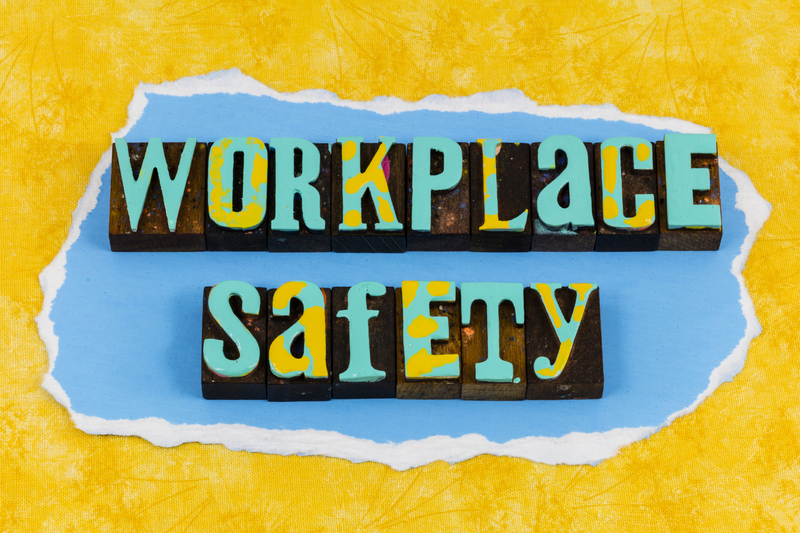Category: Paperwork
Shopping for SHOP Coverage
May 15, 2022

Signed into law in 2010, the Affordable Care Act changed many regulations affecting small businesses and insurance. The law established the Small Business Health Options Program (SHOP) for small employers —generally those with 1–50 employees—who want to provide health and dental coverage to their employees affordably, flexibly, and conveniently.
Qualifications to provide SHOP coverage
Find out on the HealthCare.gov website if your business or non-profit organization qualifies for SHOP by meeting the following four requirements:
1. You have 1-50 full-time equivalent employees (FTEs)
- Use the FTE Calculator to see if you qualify. Note: To qualify for SHOP, you must have at least one FTE employee other than owners, spouses, and family members of owners and partners.
2. You offer coverage to all full-time employees—generally, workers averaging 30 or more hours per week
- You don’t have to offer coverage to part-time employees—those averaging fewer than 30 hours per week—or seasonal workers.
3. You enroll at least 70 percent of the employees to whom you offer insurance
- Employees with other health coverage aren’t counted as rejecting your offer.
- Use the SHOP Minimum Participation Rate Calculator to see how many of your employees must accept.
- Some states have different minimum participation requirements. See if this affects you.
- If you don’t meet your minimum participation requirement, you can enroll between November 15-December 15 any year. During this time, the participation requirement isn’t enforced.
4. You have an office or employee work site within the state whose SHOP you want to use
- Visit this page, select your state, and see how to access SHOP insurance in your state.
- See what to do if your business operates in multiple states.
- If eligible, you don’t have to wait for an open enrollment period. You can start offering SHOP coverage to your employees any time of year.
Reasons to offer SHOP coverage
- SHOP insurance gives you choice and flexibility to:
- Offer your employees one plan or let them choose from multiple plans.
- Offer only health coverage, only dental coverage, or both.
- Choose how much you pay toward your employees’ premiums and whether to offer coverage to their dependents.
- Decide how long new employees must wait before enrolling.
- You can get the information you need in one location. You can make an informed decision about your SHOP insurance options with the tools at HealthCare.gov where you can compare plans and prices and find out if you qualify for SHOP.
- You can use your current SHOP-registered agent or broker or find an agent or broker in your area to help you enroll in coverage.
- You may be able to get the Small Business Health Care Tax Credit. Enrolling in SHOP insurance is generally the only way for eligible small employers to take advantage of the Small Business Health Care Tax Credit. You may qualify if you have fewer than 25 FTE employees making an average of about $56,000 or less. See how much your business could save. Updated IRC guidelines for small business health care tax credit and the SHOP marketplace can inform you if you are a small employer.
InsureYouKnow.org
Whether you are an employer or an employee in a small business, you may find it helpful to review SHOP coverage how-to guides, fact sheets, tools, and other resources. After making SHOP health insurance decisions, you can keep your records about the best plan for you and its costs, benefits, and features at insureyouknow.org.
Drought Eased by Rain and Your Call to Action
May 1, 2022

Is it raining today or is rain in the forecast this week? Rain can bring relief to drought—a prolonged period of abnormally low rainfall, leading to a shortage of water. Droughts can last a single season, a whole year, or for many years, and can affect a few hundred or millions of square miles.
Public health implications of drought include concerns about water, food and nutrition, air quality, sanitation and hygiene, recreational risks, and infectious and chronic diseases.
Water
Reduced stream and river flows can increase the concentration of pollutants in water and cause stagnation that kills fish and other aquatic life. Many parts of the United States depend on groundwater as a primary source of water. Groundwater sometimes contains naturally present germs and harmful chemicals from the environment, such as arsenic and radon. More often, human activities contaminate groundwater.
What Can You Do? Learn to correctly use fertilizers and pesticides; maintain septic systems; properly remove or store wastes; and prevent chemical spills at work sites.
Food and Nutrition
Drought can limit the growing season and create conditions that encourage insect and disease infestation in certain crops. Low crop yields can result in rising food prices and shortages, potentially leading to malnutrition.
What Can You Do? Whether you grow your vegetables or buy them at a farmer’s market or grocery store, select drought-tolerant vegetables specifically bred for drought resistance. Popular choices include lima beans, pole beans, corn, mustard greens, okra, squash, Heatwave II tomatoes, Black Diamond watermelons, and most herbs.
Air Quality
The dusty, dry conditions and wildfires that often accompany drought can harm your health. Fire, combined with dry soil and vegetation, increases the number of particulates suspended in the air, such as pollen, smoke, and fluorocarbons that can irritate the bronchial passages and lungs, making chronic respiratory illnesses like asthma, bronchitis, and bacteria pneumonia worse.
What Can You Do? Learn about CDC’s EXHALE strategies to help people with asthma achieve better health: Education on asthma self-management; X-tinguishing smoking and exposure to secondhand smoke; Home visits for trigger reduction and asthma self-management education; Achievement of guidelines-based medical management; Linkages and coordination of care across settings; Environmental policies or best practices to reduce asthma triggers from indoor, outdoor, or occupational sources.
Sanitation and Hygiene
Having water available for cleaning, sanitation, and hygiene reduces or controls many diseases. Drought conditions create the need to conserve water, but conservation efforts should not prevent proper sanitation and hygiene.
What Can You Do? Your attention to personal hygiene, cleaning, hand washing, and washing of fruits and vegetables can be done in a way that conserves water and reduces health risks. Install low-flow faucet aerators in your business and home to reduce water consumption while maintaining hand washing and other healthy hygienic behaviors.
Recreational Risks
If you engage in water-related recreational activities during drought, you may be at increased risk for waterborne disease caused by bacteria, protozoa, and other contaminants such as chemicals and heavy metals.
What Can You Do? The best way you can prevent swimming-related illnesses from spreading is to keep germs out of the water in the first place. This means that if you or your child has been sick with diarrhea in the past two weeks, you should stay out of the water. To protect yourself from the most common swimming-related illnesses, keep water out of your mouth when you swim and dry your ears after you swim.
Infectious Disease
Increases in infectious disease can be a direct consequence of drought. Viruses, protozoa, and bacteria can pollute groundwater and surface water when rainfall decreases. If you get your drinking water from a private well or if you have an underlying chronic condition, you may be at higher risk for drought-related infectious disease.
What Can You Do? To prevent the spread of acute respiratory and gastrointestinal illnesses from person to person, be diligent in handwashing. If you get your drinking water from a well, check it at least every spring to make sure there are no mechanical problems and test it once each year for total coliform bacteria, nitrates, total dissolved solids, and pH levels. If you suspect other contaminants, you should test for those as well.
Chronic Disease
Conditions associated with drought may negatively impact people who have certain chronic health conditions such as asthma and some immune disorders. Drought-related changes in air quality, such as increased concentrations of air particulates and airborne toxins resulting from freshwater algal blooms, can irritate the eyes, lungs, and respiratory systems of persons with chronic respiratory conditions.
What Can You Do? By making healthy behavior part of your daily life, you may prevent the exacerbation or occurrence of chronic disease conditions. Heed warnings about adverse weather conditions and stay indoors, avoid strenuous outdoor activities, and take prescribed medications. Talk to your health care provider if symptoms worsen.
Diseases Transmitted by Insects and Animals
In periods of limited rainfall, both human and animal behavior can change in ways that increase the likelihood of vector-borne diseases. During dry periods, wild animals are more likely to seek water in areas where humans live. These behaviors increase the likelihood of human contact with wildlife, the insects they host, and the diseases they carry.
Stagnant water provides additional breeding grounds for certain types of mosquitoes that can transmit the West Nile virus to humans.
What Can You Do? If you collect rainwater, don’t let the water get stagnant and become a manmade mosquito breeding area. Dump out any standing water, including in outdoor pet bowls and flowerpots. Pick up litter—bottles, cups, cans, car tires, and other containers that can hold water—on your property. Keep your lawn free of overgrown trees, brush, weeds, and tall grass. Plant mosquito-repelling herbs, flowers, and plants, including peppermint, lavender, marigolds, and feverfew.
InsureYouKnow.org
Your portal at insureyouknow.org is an ideal place to keep track of your home insurance and maintenance records, annual surveys of your property, and records of repairs and purchases needed for water resources, including septic systems or wells.
Before You Take a Deep Breath Outside This Spring
April 15, 2022

You’ve got cabin fever and spring weather is beckoning you to enjoy the great outdoors. Before you venture forth–even if it’s just to your backyard—curtail allergic reactions to pollen that may cause you to have hay fever and start to sniffle and sneeze.
Causes and symptoms
The biggest spring allergy trigger is pollen from trees, grasses, and weeds that release tiny grains into the air to fertilize other plants. When these particles get into the nose of someone who’s allergic, they send the body’s defenses into high gear.
The immune system mistakenly sees the pollen as a danger and releases antibodies that attack the allergens leading to the release of histamines into the blood. Histamines are chemicals that trigger a runny nose, itchy eyes, dark circles under your eyes, and other symptoms that are familiar if you have allergies.
Pollen counts tend to be particularly high on breezy days when the wind picks up sneeze-inducing grains and carries them through the air. Rainy days wash away allergens.
Being inside may protect you from windblown pollen, but other seasonal triggers, such as mold and dust mites, can be prevalent inside your house and cause allergic reactions.
Diagnosis
Start with your primary physician who may refer you to an allergist for tests. An allergy specialist may give you a skin test, which involves either pricking the surface of the skin with a tiny amount of allergen or injecting a tiny sample of a diluted allergen under the skin of your arm or back. If you’re allergic to the substance, a small red bump (called a wheal or hive) will form. You may also undergo a blood test to detect and measure the allergen-specific antibodies in your blood.
Treatments
Many over-the-counter and prescription drugs can ease the symptoms of allergies. They include:
- Antihistamines reduce sneezing, sniffling, and itching by lowering the amount of histamine in your body.
- Decongestants shrink blood vessels in the nasal passageways to relieve congestion and swelling.
- Antihistamine/decongestant combos combine the effects of both drugs.
- Nasal spray decongestants relieve congestion and may clear clogged nasal passages faster than oral decongestants without some of the side effects.
- Steroid nasal sprays ease inflammation and are the preferred initial treatment.
- Eye drops relieve itchy, watery eyes.
- Immunotherapy gives you gradually increasing doses of the allergen until your body can handle it. The treatment can relieve your symptoms for a longer time than other types of allergy medications. Although it doesn’t work for everyone, it can stave off some people’s symptoms for a few years.
If you feel like you need over-the-counter antihistamines and decongestants for more than a few days, ask your doctor to recommend an effective regimen, which may include:
- Prescription medications, including steroid nasal sprays,
- Allergy shots, or
- Under-the-tongue immunotherapy tablets.
Some natural and alternative remedies for allergies that may ease your symptoms include:
- Nasal irrigation, a way to rinse your nasal passages with saline solution
- Butterbur, an herb from a European shrub that shows potential for relieving seasonal allergy symptoms
- Acupuncture, a technique in which practitioners stimulate specific points on the body—most often by inserting thin needles through the skin
Talk to your doctor before you start any herbal product or alternative treatment. Some can cause side effects or react with medications you take.
InsureYouKnow.org
After you choose and try allergy remedies, keep track of your selections and effectiveness at insureyouknow.org. On this handy portal, you’ll also be able to retain health insurance coverage records, details about office visits and allergy tests, and dates of prescriptions so you’ll know when you need refills to prevent seasonal allergies from interrupting your spring activities.
Step Right Up to a Safety Program at Your Workplace
March 31, 2022

With more people transitioning to a post-pandemic work environment and returning to work in person, employees and employers may need to review their workplace safety plans to prevent injuries and reduce the high cost of insurance claims. According to the Occupational Safety and Health Administration (OSHA), “The main goal of safety and health programs is to prevent workplace injuries, illnesses, and deaths, as well as the suffering and financial hardship these events can cause for workers, their families, and employers.”
OSHA’s recommended practices use a proactive approach to managing workplace safety and health. Traditional approaches are often reactive—that is, problems are addressed only after a worker is injured or becomes sick, a new standard or regulation is published, or an outside inspection finds a problem that must be fixed. These recommended practices recognize that finding and fixing hazards before they cause injury or illness is a far more effective approach.
Create a workplace safety plan
Both management and employee involvement are needed when creating a safety plan. If employees are involved in identifying and resolving safety and health problems, they will bring their unique insights and energy to achieving the goals and objectives of a safety plan. Employees are the most valuable assets of a company. Their safety, health, and goodwill are essential to the success of a business.
Employers and employees can take the following steps to create a comprehensive workplace safety plan:
- Identify risks and potential hazards in your workplace. After you’ve identified the risks in your business environment, make sure all employees understand the risks associated with their positions.
- Learn your industry’s compliance standards. As the government agency charged with setting and enforcing standards of safe and healthful working conditions, OSHA frequently updates its rules for individual industries, so it’s important to stay on top of the regulations for your industry.
- Develop programs and processes. You’ll need to create clear guidelines for your employees to promote a culture of health and safety at your company. Employee job descriptions should be clear and in writing, discussing individual responsibilities related to health and safety.
- Seek input on workplace changes. Before making significant changes to the workplace, work organization, equipment, or materials, consult with workers to identify potential safety or health issues.
- Make improvements. Set aside a regular time to discuss safety and health issues, to identify ways to improve the program.
- Educate your employees. Training sessions should be held whenever a new hire is made, or when new processes, procedures, or equipment are introduced to the workplace. Be sure to teach employees how to identify hazards, prevent accidents, and respond to injuries. Display posters as reminders of your company’s safety procedures and priorities and include workplace safety procedures in your employee handbooks.
- Enforce and evaluate your safety plan. If your employees aren’t on board with enforcement, you’ll have a tough time implementing any changes in your safety and health policies. Routine safety audits and annual training sessions are effective ways to begin enforcing safety rules.
- Be prepared for inevitable injuries. Even after you have established a safety plan, an accident might occur in your workplace. Devise a plan to relocate your employees when they’re injured and have contact information at the ready for your occupational medicine and workers’ compensation providers.
Include psychological challenges in safety concerns
The American Psychological Association (APA) proactively supports employee productivity and mental wellness that strengthen overall organizational performance through reduced turnover and decreased health care costs.
APA’s perspective involves five interconnected domains:
- Employee involvement empowers staff by involving them in decision-making and providing autonomy.
- Work-life integration provides flexibility around when, where, and how staff work.
- Employee growth and development expand employees’ knowledge and skills and help develop their careers.
- Employee recognition rewards employee contributions.
- Health and safety maximize staff health by preventing, assessing, and treating potential risks and encouraging healthy behaviors.
Employers will find that implementing OSHA’s recommended practices and APA’s interconnected domains also brings other benefits. Safety and health programs help businesses:
- Prevent workplace injuries and illnesses
- Improve compliance with laws and regulations
- Reduce costs, including significant reductions in workers’ compensation premiums
- Engage workers
- Enhance their social responsibility goals
- Increase productivity and enhance overall business operations
InsureYouKnow.org
After you’ve established a safety and health program at your workplace, you should be all set on being safe and sound at work. But, if you do experience a mishap and need to file a claim for worker’s compensation or disability insurance, keep track of your medical records and insurance details at insureyouknow.org.
Ask or Be Asked: Executor of an Estate
March 2, 2022

An executor of an estate is someone called upon to settle a deceased individual’s financial affairs. In your will, you may name a close relative, friend, accountant, attorney, or financial institution to act as executor of your estate. You also may designate co-executors—more than one person to handle your affairs. If you are asked to be an executor, consider it a great honor. But at the same time, keep in mind that it is also a great responsibility.
You should select an executor with integrity and good judgment. The law requires an executor to act in the estate’s best interest—known as “fiduciary duty”—even if they are also an heir, which is often the case. You’ll need to make sure they understand and are prepared for the job.
The Duties of an Executor of an Estate
An executor’s responsibilities can vary depending on the complexity of your estate, and the decisions you designate in your will. Following are some of the duties an executor of an estate performs.
- Locate the last will and file it in probate court
- Obtain certified copies of the death certificate
- Notify the state department of health of the death if a funeral home, crematorium, hospital, or nursing facility has not
- Distribute assets to beneficiaries
- Pay creditors
- Issue notices of death to banks, government agencies, and insurance companies
- File final tax returns
- Maintain property until the estate is settled
- Arrange care for any pets
- Make court appearances on behalf of the estate
- Notify current employer, if applicable
- Notify the deceased’s beneficiaries of the probate hearing
- Keep accurate records
- File the final accounting with the court and close the estate
As an executor, you may discover you need to hire a professional such as an accountant or attorney to help value and distribute certain assets, including:
- Assets with disputed ownership
- Business interests
- Royalties
- Out-of-state assets
- Complex investments
Ambiguities in a will and substantial bequests to a minor also may require a professional’s expertise, which your estate will pay customarily.
The Decision to Serve as an Executor
If you are asked to serve as an estate’s executor, realize that it is a great honor and a great responsibility. Consider your decision carefully before you agree. Think about the time commitment as well as the skillset and temperament required to perform the duties. Find out why the person asked you to serve as an executor and discuss his expectations for you to fill this role.
With this disclosure, you should be able to decide if you are qualified for the job and your fulfillment of an executor’s duties will be appreciated.
Compensation Considerations
Many executors perform their duties without compensation, especially if they are one of your estate’s beneficiaries. But executors can get paid for their work, and this arrangement is more common if the executor is a person outside your family or if settling your estate requires significant expenses such as travel, filing court documents, or overseeing the sale of your real estate.
Another option for you is to limit in your will the fees to a specific dollar amount. Or you may specify the payment of reasonable fees based upon state law.
Typically, executors can expect to get paid once the estate is settled. If they incur out-of-pocket expenses, such as utilities, property taxes, insurance, and storage fees before the estate is settled, they can usually reimburse themselves during their estate administration. But again, compensation is a subject that should be spelled out before you accept an executorship. Spending down any estate monies can be an area of great sensitivity, especially if heirs believe their inheritance was reduced because of your executorship.
InsureYouKnow.org
When you select an executor of your estate who accepts the responsibility to carry out your wishes regarding your estate upon your death, ask yourself the following five essential questions. Let the executor know if the answers can be found on your InsureYouKnow.org portal.
- Where is your original will? If you keep your will in your house, be specific about where to find it. If you filed it with your attorney, provide contact information. Don’t store it in a safe deposit box, where it may be difficult to access after your death. You should share your InsureYourKnow.org access credentials with the executor of your estate to be able to find a copy of your will online.
- Who should be notified? Compose a list of people and organizations with contact information for your executor to contact. If you keep this list at InsureYouKnow.org, you can update it regularly.
- What are your passwords and access codes? Let your executor know how to retrieve your passwords and access codes for email, social media, other media accounts, cellphones, and computers. Store and keep this data current at InsureYouKnow.org.
- Who will receive your possessions? If you have nonfinancial items such as family recipes, photos, heirlooms, and memorabilia, keep details with designated recipients at InsureYouKnow.org.
- Do you have any secret items? Let the executor or another person you trust know if you possess personal items that need to be dealt with on a confidential basis. Such items may include correspondence, photos, or documents personal in nature. You can keep a secure list of these items at InsureYouKnow.org.
Selecting a trusted executor to carry out your will is an important part of estate planning. Experts recommend updating your will every few years to make sure it still reflects your chosen executor and decisions to be carried out after your death. If you need to create or update your will, you can file copies at InsureYouKnow.org.
Whether you are the person asking or are the person being asked to be an executor of an estate, carefully consider and execute the responsibilities and duties required.
Steps to Take in American Heart Month
February 15, 2022

February, celebrated as American Heart Month, is a time to reflect on your heart health, consider your risk factors, and take steps toward preventing heart disease and stroke.
Review these seven signs for heart disease risk:
- Smoking. More than 35 million adults in America are smokers, and thousands of young people pick up the habit daily. If you don’t smoke, don’t start. If you’re a smoker, do your best to quit or cut down. The American Lung Association can help tobacco users figure out their reasons for quitting and then take the big step of quitting for good.
- Physical inactivity. Regular physical activity helps improve overall health and reduces the risk for heart disease, stroke, and premature death. In people with cardiovascular disease, physical activity can help manage their conditions; exercise training has been shown to have a positive effect on people with certain types of heart failure, and cardiac rehabilitation, which includes physical activity training, helps improve the health of people who have had a heart attack or bypass surgery.
- Nutrition. Make heart-healthy diet decisions. Eat whole foods low in trans-fat, saturated fat, sodium, and added sugar. Nutritionists recommend that you fill half your plate with fruits and vegetables.
- Overweight/Obesity. People overweight or obese have a higher risk for heart disease. Carrying extra weight can put extra stress on the heart and blood vessels. To find out if your weight is in a healthy range, you can calculate your Body Mass Index (BMI) at CDC’s Assessing Your Weight website.
- High Cholesterol. Your health care team should test your blood levels of cholesterol at least once every 4 to 6 years. If you have already been diagnosed with high cholesterol or have a family history of the condition, you may need to have your cholesterol checked more often. Talk with your health care provider about this simple blood test. If you have high cholesterol, medicines and lifestyle changes can help reduce your risk for heart disease.
- Diabetes. If you have diabetes, monitor your blood sugar levels carefully. Talk with your health care team about treatment options. Your doctor may recommend certain lifestyle changes to help keep your blood sugar under control. These actions will help reduce your risk for heart disease.
- High Blood Pressure. Millions of people in the United States have high blood pressure, and millions of them are as young as 40 or 50. If you are one of them, talk to your doctor about ways to control it. High blood pressure usually has no symptoms, so have it checked on a regular basis. Your health care team should measure your blood pressure at least once every 2 years if you have never had high blood pressure or other risk factors for heart disease.
If you have been diagnosed with high blood pressure, also called hypertension, your healthcare provider will measure your blood pressure more often to make sure you have the condition under control. Ask how often you should check your blood pressure which can be done at a doctor’s office, at a pharmacy, or at home.
Your health care team might recommend some changes in your lifestyle, such as lowering sodium in your diet; your doctor also may prescribe medicine to help lower your blood pressure.
During the COVID-19 pandemic, many people have put off scheduling a routine annual physical examination. Healthcare professionals take precautions daily to prevent the transmission of COVID-19 in their facilities. If you feel comfortable with your vaccination status and safety measures in place, make an appointment to find out if you have high blood pressure or high cholesterol and to address other risk factors.
InsureYouKnow.org
After you check in with your healthcare provider to rate your risk for heart disease and stroke, keep track of recommended prevention steps, prescribed medications, lab test results, and a calendar of completed and upcoming appointments at insureyouknow.org.
The Great Resignation Continues in 2022
January 29, 2022

“The Great Resignation” is a term coined in May 2021 by Anthony Klotz, Ph.D., an associate professor of management at Mays Business School at Texas A&M University who predicted the mass exodus of employees abandoning jobs during the pandemic.
In April, a month before Dr. Klotz made this prediction, a record 4 million people quit their jobs, many of them in low-paying, inflexible industries such as retail trade sectors and food services. He explained that during the pandemic, employees have been able to reflect about family time, remote work, commuting, passion projects, life and death, and what it all means which led workers to consider alternatives to their current positions.
Because the latest data suggests this trend, also called the “Big Quit,” will continue through 2022, employees, as well as employers, must prepare for changes in the workforce.
Employees
Before you submit your resignation, consider the following suggestions to guide your decision:
- Reassess your duties: Expanding your responsibilities within the company may offer the growth that you’re looking for without leaving your workplace. Promotion within your company may lead to a higher salary and additional benefits. On the other hand, you may feel overworked or are experiencing burnout, resulting in work-related stress, and seeking a less demanding opportunity may be a solution during this difficult time.
- Meet with your employer: If you prefer to work remotely, meet with your employer and plead your case to work all or part of your workweek away from the corporate office, especially if you have health and safety concerns, childcare issues, or COVID-related care responsibilities. Explain how important work/life flexibility is to you and ask if your employer is willing to consider your needs for your home life situation. Take this opportunity to ask if your salary, benefits, and health insurance could be improved to entice you to stay.
- Be flexible with your transition: If possible, notify your supervisor in person when you decide to resign and be flexible about the ending date in your position. Be professional in your exit interview, request a letter of recommendation for your files, find out when you’ll receive your last paycheck, and ask about the continuation of your benefits.
- Assess your financial situation: If you determine that you need to continue receiving a steady paycheck and insurance benefits, secure another position or outline a solid self-employment opportunity before you resign. If you are close to retirement age, figure out if you can delay collecting Social Security and retirement benefits so you can collect higher monthly payments in the future.
Employers
Employers who want to reduce staff turnover and retain experienced employers may benefit from the following tips adapted from the article, “How Employers Can Overcome The Great Resignation” from the Worth Media website.
- Be creative in putting together benefits packages that can support a diverse workforce with broad, varying needs.
- Remain flexible when employees choose their work locations.
- Keep an open line of communication with your employees.
- Emphasize the importance of employees’ mental and physical well-being.
- Prioritize pay equity and adopt a spirit of transparency.
- Remind your employees about your company’s mission, values, and vision.
- Treat employees who do leave with respect, a sense of professionalism, and kindness.
Employers’ main goal during this tumultuous time should be to remain calm, listen to employee feedback, and use it to make any necessary changes to their business model, benefits package, and salaries.
InsureYouKnow.org
Are you planning to join “The Great Resignation” in 2022? If so, consider not only how you can improve your present work situation but also what the future may hold for your career choices, continuing education, home life, insurance coverage, and financial goals. As you put each of these options in place, keep records regarding your decisions at insureyouknow.org.
Get Ready to File Your Taxes
January 14, 2022

Although April 15 is traditionally the Internal Revenue Services’ (IRS) tax deadline day, in 2022 you’ll have until Monday, April 18, to file your taxes for 2021. April 18 also will be the deadline to request an automatic extension for an extra six months to file a return although the payment of taxes remains the same.
The IRS encourages taxpayers to get informed about topics related to filing their federal tax returns in 2022. These topics include special steps related to charitable contributions, economic impact payments, and advance child tax credit payments. Taxpayers can visit IRS.gov/getready for online tools, publications, and other helpful resources for the filing season.
Collect year-end income documents
Gather all your year-end documents before you start preparing your 2021 tax return and have on hand:
- Social Security numbers (SSNs) of everyone listed on your tax return. You may have these numbers memorized but double-checking that the SSNs on your tax return are accurate will avoid processing delays.
- Bank account and routing numbers. You’ll need these for direct deposit refunds. Direct deposit is the fastest way for you to get your money and avoids a check getting lost, stolen, or returned to IRS as undeliverable.
- Forms W-2 from employer(s).
- Forms 1099 from banks, issuing agencies, and other payers including unemployment compensation, dividends, distributions from a pension, annuity, or retirement plan.
- Forms 1099-K, 1099-MISC, W-2, or other income statements if you are a worker in the gig economy.
- Form 1099-INT for interest received.
- Other income documents and records of virtual currency transactions.
- Form 1095-A, Health Insurance Marketplace Statement. You will need this form to reconcile advance payments or claim the premium tax credit.
- Letter 6419, 2021 Total Advance Child Tax Credit Payments, to reconcile your advance child tax credit payments.
- Letter 6475, Your 2021 Economic Impact Payment, to determine your eligibility to claim the Recovery Rebate Credit.
You’ll receive forms by mail or via access online from employers and financial institutions in January. You should carefully review the forms for the income you received in 2021. If any information shown on the forms is inaccurate, you should contact the payer immediately for a correction.
Here are some key items for you to know before you file this year:
Notice changes to the charitable contribution deduction
Taxpayers who don’t itemize deductions may qualify to take a deduction of up to $600 for married taxpayers filing joint returns and up to $300 for all other filers for cash contributions made in 2021 to qualifying organizations.
Check on advance child tax credit payments
Families who received advance payments will need to compare the advance child tax credit payments that they received in 2021 with the amount of the child tax credit that they can properly claim on their 2021 tax return.
- Taxpayers who received less than the amount for which they’re eligible will claim a credit for the remaining amount of child tax credit on their 2021 tax return.
- Eligible families who did not get monthly advance payments in 2021 can still get a lump-sum payment by claiming the child tax credit when they file a 2021 federal income tax return next year. This includes families who don’t normally need to file a return.
Early this year, the IRS will send Letter 6419 with the total amount of advance child tax credit payments taxpayers received in 2021. You should keep this and any other IRS letters about advance child tax credit payments with your tax records. You can also create or log in to IRS.gov online account to securely access your child tax credit payment amounts.
Claim the recovery rebate credit for economic impact payments
If you didn’t qualify for the third economic impact payment or did not receive the full amount, you may be eligible for the recovery rebate credit based on your 2021 tax information. You’ll need to file a 2021 tax return to claim the credit.
You’ll need the amount of your third economic impact payment and any plus-up payments received to calculate your correct 2021 recovery rebate credit amount when you file your tax return.
The IRS also will send early this year Letter 6475 that contains the total amount of the third economic impact payment and any plus-up payments received. You should keep this and any other IRS letters about your stimulus payments with other tax records. You also can create or log in to IRS.gov online account to securely access your economic impact payment amounts.
Report unemployment compensation received
In 2021, many people received unemployment compensation that is taxable and must be reported on their income tax returns. If you received unemployment benefits, you should receive Form 1099-G, Government Payments, from your state unemployment insurance agency in January either by mail or electronically. Check your state’s unemployment compensation website for more information. Form 1099-G reports the amount of unemployment compensation received in Box 1 and any federal income tax withheld in Box 4. Be sure to include these amounts on your 2021 federal tax return. Find more information on unemployment benefits in Publication 525.
Choose a reputable tax return preparer
As you get ready to file your 2021 tax return, you may be considering hiring a tax return preparer. The IRS reminds taxpayers to choose a tax return preparer wisely. This is important because you are responsible for all the information on your return, no matter who prepares it for you.
There are different kinds of tax preparers, and your needs will help determine which kind of preparer is best for you. With that in mind, here are some quick tips from the IRS to help you choose a preparer.
- Check the IRS Directory of Preparers. While it is not a complete listing of tax return preparers, it does include those who are enrolled agents, CPAs, and attorneys, as well as those who participate in the Annual Filing Season Program.
- Check the preparer’s history with the Better Business Bureau. Taxpayers can verify an enrolled agent’s status on IRS.gov.
- Ask about fees. Taxpayers should avoid tax return preparers who base their fees on a percentage of the refund or who offer to deposit all or part of their refund into their financial accounts.
- Be wary of tax return preparers who claim they can get larger refunds than others.
- Ask if they plan to use e-file.
- Make sure the preparer is available. People should consider whether the individual or firm will be around for months or years after filing the return. Taxpayers should do this because they might need the preparer to answer questions about the preparation of the tax return.
- Ensure the preparer signs and includes their preparer tax identification number (PTIN). Paid tax return preparers must have a PTIN to prepare tax returns.
- Check the person’s credentials. Only attorneys, CPAs, and enrolled agents can represent taxpayers before the IRS in tax matters. Other tax return preparers who participate in the IRS Annual Filing Season Program have limited practice rights to represent taxpayers during audits of returns they prepared.
Review Publication 5349: “Year-Round Tax Planning is for Everyone”
Life changes can affect your expected refunds or the amount of tax you owe. These changes include things such as employment status, marital status, and financial gains or losses. Publication 5349 provides tips on developing habits throughout the year that will help make tax preparation easier.
InsureYouKnow.org
When you file your 2021 tax return, keep a record of the forms you submit to the IRS at insureyouknow.org. Get a jump on your 2022 tax return by organizing your tax records, including Forms W-2 and W-9 from employers, Forms 1099 from banks and other payers, other income documents, and records of virtual currency transactions. Keep track of your tax records as you receive them at insureyouknow.org. Having records organized makes preparing a tax return easier. It may also help you discover potentially overlooked deductions or credits.
Resolve to Go Paperless in 2022
December 30, 2021

In January, follow the example of the U.S. government that has committed to moving to a paperless archival system by December 31, 2022. The Office of Management and Budget’s (OMB) directive for government agencies to transition to electronic records has prompted them to take steps in their modernization journeys.
The government faces multiple challenges with paper records, such as burdens on the workforce and high costs to manually create, use, and store nonelectronic information. As an individual, you may face similar dilemmas in dealing at home with your printed files, insurance records, and other important documents that would be difficult to replace if damaged or destroyed by natural disasters or accidents.
As government agencies transition to electronic records, many are experimenting with new technologies to sort through electronically stored information. Universities and businesses also have guidelines for storing electronic records in online repositories that they strive to:
- Back up regularly
- Comply with all privacy and security requirements
- Allow for shared access through a network or a cloud-based program
- Organize in such a way that records can be identified and purged appropriately
- Set up to migrate content to a new system upon replacement
- Maintain through regular software updates
InsureYouKnow.org
After you review the electronic storage practices of the government, universities, and businesses, establish your own ground rules for storing your important records at InsureYouKnow.org. Keep in mind the following tips:
- A systematic plan for keeping track of important documents can save you hours of anxious searching for misplaced items. It also can help you reduce the number of nonimportant papers cluttering your home.
- It is important to carefully store valuable papers which would be difficult or time-consuming to replace. Original hard-to-replace documents are ideally kept in a safe deposit box or a fire-proof, waterproof, burglar-proof home safe or lockbox. Scanned copies can be stored at InsureYouKnow.org where they will be readily accessible.
- Electronically stored records must be legible, readable, and accessible for the period of limitations required. It is important to back up electronic files at InsureYouKnow.org in case of a computer malfunction in your home office.
- Wherever you live, there is always a risk of fires, floods, and other disasters, and your home and important documents could be destroyed. If you have stored photographic images, you’ll have records accessible whenever you need them, including keeping peace of mind knowing documents are indestructible at InsureYouKnow.org.
Valuable papers can be sorted into two types: those needed for day-to-day use and those needed occasionally.
Examples of valuable papers used frequently include:
- Drivers’ licenses
- Credit cards
- Health insurance cards
- Bank account records
- Identification cards
- Special health documentation such as COVID-19 vaccinations, allergies, disabling conditions, prescriptions, and blood types for family members
Examples of valuable papers used occasionally include:
- Birth, marriage, and death certificates
- Deeds, leases, and property records and titles
- Income and employment records
- Passports
- Contracts
- Insurance policies
- Income tax records
- Military papers
- Divorce decrees
- Social Security records
- Retirement and pension plans
- Wills
Regular filing and reviewing of paper and electronic documents are important. Making decisions on when to discard old, printed files and purge electronic versions may be difficult but worth the effort to keep accurate, up-to-date records.
Track Your Gifts on a Home Inventory
December 14, 2021

Lucky you! You’ve been nice, not naughty, so, you may be rewarded with gifts galore this holiday season. What’s on your wish list—a smart TV, a laptop computer, or a sporty new vehicle? In all the excitement of opening and enjoying your generous bounty, remember to keep track of your new acquisitions by adding them to your home inventory. If you’ve never compiled a home inventory, you can start with recent gifts and then add older possessions. You’ll also want to update your home inventory regularly and add new items or delete possessions you no longer own.
Why Should You Maintain a Home Inventory?
In the event of a burglary, fire, or another disaster, if you have an up-to-date home inventory, you’ll be able to file a detailed insurance claim quickly, settle faster, and receive compensation promptly. You also should review the current value of items you own in case you need to increase your home insurance coverage.
What Should You Include in a Home Inventory?
- A description of each item you possess, including the make, model, and serial number
- The estimated value of the item/replacement cost
- Appraisal or cost at the time of purchase
- Purchase date
- Receipt and source of purchase
- Photos of each item taken with your cell phone or digital camera
- Detailed description about the item if received as a gift
How Do You Make a List?
Here are some suggestions to help you organize your list:
- By room. Choose a room and list all the contents. For example, start in your living room and list everything, like your TV, sofa, recliner, and side tables. Remember to list even the mall stuff, like books, knickknacks, and decorations on your shelves.
- By groups of items. Or group together items like antiques, artwork, clothes, collections, jewelry, kitchen items, furniture, musical instruments, and miscellaneous items.
- Off-site items. Make sure you include belongings you keep in a self-storage unit covered by your homeowner’s insurance.
Although you may be faced with the daunting challenge to document all your possessions in compiling a home inventory, persevere even if you can’t get it all done immediately. It’s better to have an incomplete inventory than not to have any assets recorded.
Should You Reevaluate Your Insurance Coverage?
While you’re documenting all your possessions, look at high-value items such as jewelry, musical instruments, artwork, camera equipment, and electronics. Keep in mind that your homeowner’s insurance might put a special sublimit on certain types of items. Realize that just because you have an item on your home inventory list, doesn’t mean you will get paid for it. Check your policy’s declaration page for special limits for specific categories of merchandise. You may need to purchase an insurance rider for items such as jewelry and specialized collections.
For example, a common homeowner’s insurance policy puts a $1,500 limit on theft coverage for jewelry and watches. If you have valuable items, you can “schedule” them. Scheduled personal property is an add-on to homeowners’ or renters’ insurance to insure high-value items for their full value.
Make sure your policy covers the replacement value of your possessions, not the actual cash value. An actual cash value payment would pay you only the depreciated value of your items, not new replacements.
If you live in an area that’s prone to earthquakes or floods, you could consider earthquake insurance or flood insurance. Without them, your home and belongings won’t be covered in certain disaster situations.
InsureYouKnow.org
After you have created a detailed home inventory, you can store it at insureyouknow.org. You’ll be able to access your list of possessions and add, delete, or refine entries regularly. With a current record of your newly acquired and older possessions on file, you’ll be prepared if you need to file an insurance claim or reevaluate your insurance coverage.
